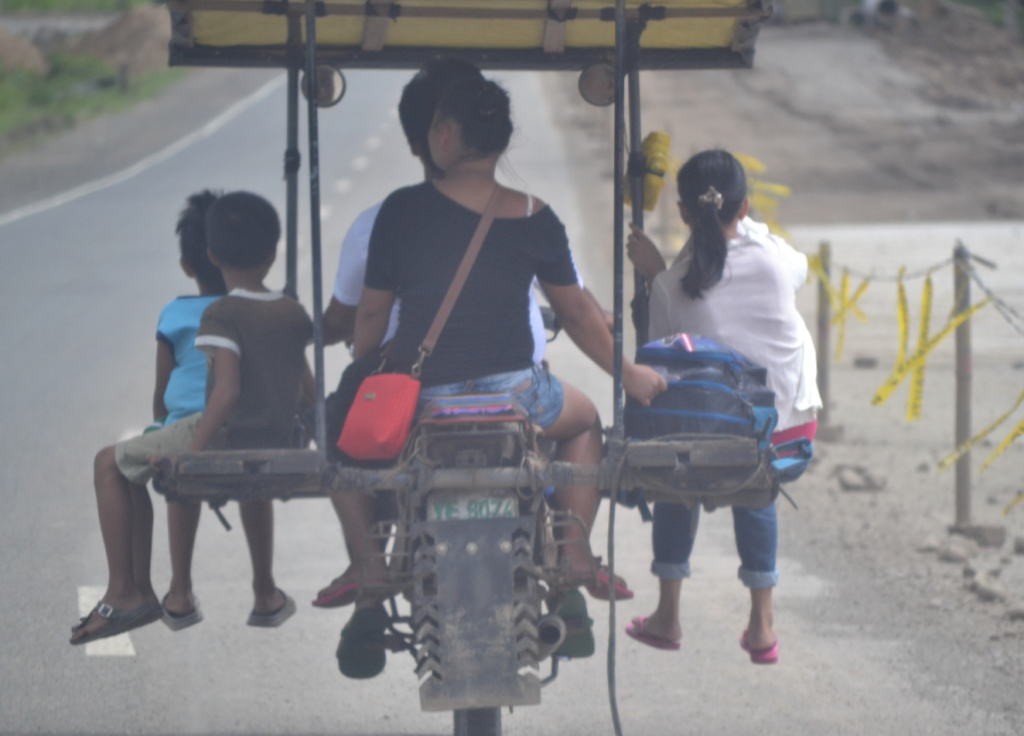Text and Photos by Henrylito D. Tacio
What makes the Philippines truly unique as a country is not only because of its people, its destinations, and its foods. Among foreigners – and even some locals – some areas are even more fascinating because of their mode of transportation.
In the beginning, there was “kalesa” (also known as “caritela” or “karitela”), sort of an inclined cart and drawn by a single horse. It was introduced in the 18th century by Spanish colonizers.
Today, “kalesas” are rarely used in the streets. But you can still find them in Vigan and Laoag. “Kalesas” can also be found in Intramuros and Binondo, where they cater to tourists. In Iligan, decorated “kalesas” can be taken for a ride along a specific street. In Tuguegarao, the carriages are a part of the traffic along with private cars, motorcycles, tricycles, jeepneys, trucks, and bicycles.
Speaking of jeepneys, they are the most popular means of public transportation in the country. They are known for their crowded seating and kitsch decorations. As a matter of fact, jeepneys have become a ubiquitous symbol of Philippine culture and art.
Actually, jeepneys were originally made from U.S. military jeeps left over from World War II. “When American troops began to leave the Philippines at the end of World War II, hundreds of surplus jeeps were sold or given to the Filipinos,” Wikipedia wrote. “The jeeps were stripped down and altered locally: metal roofs were added for shade; and the vehicles decorated in vibrant colors with chrome-plated ornaments on the sides and hood.”
The word jeepney is a portmanteau word; some sources consider it a combination of “jeep” and “jitney,” while other sources say it actually came from “jeep” and “knee,” because the passengers sit in very close proximity to each other.
Meanwhile, there’s a growing number of people who can afford a nice motorcycle just for the daily trip between their offices and homes. There are also motorcycles which are used for serving as a kind of taxi. Most known names for these means for transportation: tricycles and motor-taxis. Both can be seen in many different forms and lengths.
Tricycle is actually a motorcycle with a sidecar (passenger-cabin). You can find tricycles everywhere, especially on smaller roads for short distances, often on roads where jeepneys or buses are not supposed to operate.
But there’s more to motorcycles than just a tricycle.
Most people who come to Davao de Oro are almost always awed, if not shocked, to see its mode of transportation – the skylab. Not known in most parts of the country, skylab is the king of the rugged roads in most of the province’s mountainous barangays.
If you are still wondering what a skylab looks like, well it’s “a single motorcycle with added contraptions that looks like the wings of an airplane.” Some skylabs have “a roof above to protect the passenger from the drops of rain or the scorching heat of the sun.”
Another form of a skylab has “two rows of elevated cubicles balancing both at the motorcycle’s sides to enclose passengers’ feet that are always left hanging while on the road in the usual designs.”
And believe it or not, a skylab can carry up to ten passengers.
“This isn’t for Ripley’s,” wrote local journalist Charlie V. Monforte. “True enough, the Japan-made single motorcycle built supposedly for a single or two passengers has undergone serious evolution here for the past two decades out of local ingenuity and road’s necessities.”
Christine T. Dompor, the provincial tourism officer, compares skylab to that of riding a flying seesaw. “The passengers are treated to an exhilarating ride as the motorcycle careens up and down rocky roads and climbs slopes, allowing you to view the chasm below and the vista beyond,” she said.
Skylab is not for the faint-hearted though. According to some locals, in the beginning they feared riding the vehicle, especially when it scales about a 45-degree ascending road. But since there are no other modes of transportation, they have no choice but to ride on a skylab.
Skylab vehicles can be seen in most parts of the province but it is most apparent in Montevista. For more than three decades now, it has been the town’s prime mode of transport and in fact it is now embraced by the people as its own.
The vehicle got its name from a space station launched and operated by National Aeronautics and Space Administration and was the United States’ first space station. Skylab orbited the Earth from 1973 to 1979, and included a workshop, a solar observatory, and other systems.
Although the Skylab crashed into the Indian Ocean, it generated a widespread panic among the people that its debris might fall on them. As a result, the word “skylab” stuck into their minds.
Davao de Oro’s skylabs are not for the uninitiated. In fact, they are considered so dangerous both to pedestrians and passengers that the Land Transportation Office has banned them on most national highways.
But due to the vehicle’s necessity, skylabs are to stay in the province. Besides, tourists are always attracted to them. – ###











